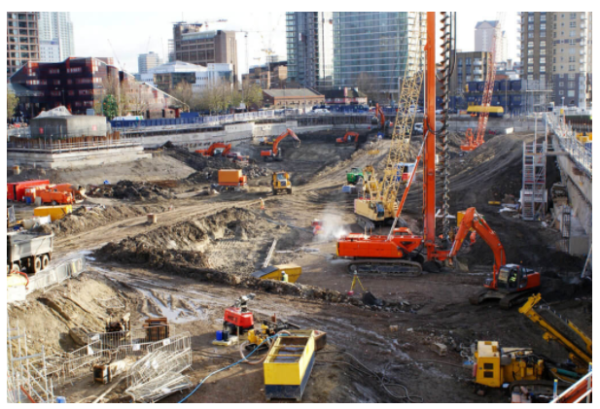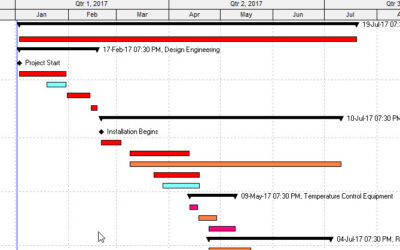5 Reasons Construction Needs Real-Time Site Updates
The construction industry is a huge bundle of complex processes. There is no straight forward structure that allows people to identify problems quickly and solve them. A simple method doesn’t exist. Any given project requires a lot of people to interact and a huge amount of information is generated. How can we make this situation better? Collaboration is the answer.
I think, almost everyone understands the importance of collaboration. The need to involve and update all relevant parties.
According to Dodge Data and Analytics, in a study 91% of contractors and clients believed that increase in collaboration reduces risk in a construction project. Similarly, 61% of the respondents claimed that the delays in construction project is due to mismanagement of schedules and timelines.
Even though we are trying, on many occasions, workers tend to work on old schedules and updates because the most common ways to increase collaboration are meetings, emails and updated records. What we need is real-time technology and collaboration in construction.
Let’s have a look at how things are done in construction.
The Complicated Structure of Construction
In construction, a typical pattern that we see time and again is that every project is treated new. Various companies come together in order to provide their expertise and insights. And at the end of the project, the group is disbanded and are off to be part of another project. This cycle then creates a need for subcontractors, main contractors and clients to be in sync with advisors such as architects and engineers.

It is not easy to construct. It is not easy to organize something that requires skills from various people on such a huge scale which is why there are so many delays and budget overruns but there are methods to improve the current way of doing things; ways that can significantly help make a difference in terms of time and cost spent in a project.
This is where real-time collaboration comes in. Let’s have a look at the various reasons why it is important to have on-site and off-site real-time collaboration.
Benefits of Real-Time Collaboration In Construction
1. Live updates to your schedule and tasks off-site
As mentioned earlier, meetings and emails are essential for information flow but they require a lot of time and planning, and by the time the information is distributed to relevant people, the information or data is days old.
Instead of wasting time on weekly meetings and daily tasks, one can use real-time collaboration technology to stay updated on tasks. There are various project management software solutions that provide you with the ability to monitor tasks on a daily progress and a few of them provide real-time tech that keeps the schedule live. Off-site and offices are connected through the software and that avoids the need to send out emails, calls between work and scheduling meetings.
2. Fast effective collaboration
Get your updates now. Learn about the progress now. Make changes now. That’s what real-time collaboration brings you. In various document management systems, the schedules are static. They need to be manually updated and then the updates need to be send out to various people involved. This takes a lot of time.
In short, you can save time and provide your workers at site with new information at anytime.
3. Fewer emails and calls
Through instant messages in real-time the need to send out emails decreases. There is also no need to call as the information is structured in such a way that the workers on-site can understand and update progress without resorting to the traditional method of calling.

4. Less administration and a full audit trail
Audit trail and record of variations are a must for any contractor and client. It justifies the resources and expenses incurred that were not part of initial budget planning. For a construction manager or project finance officer it is a daunting task to keep all the paperwork in order. Timesheets alone can drive you crazy.
This is where real-time technology comes to play. There is less paper work for managers if all tasks and changes are available in black and white for them to go through. Live updates make it easy to create reports and pdfs of the progress made and changes applied.
5. Supplementary features with real-time collaboration
Various software solutions provide a supplementary benefit of using real-time technology. Why? Well real-time collaboration becomes a data hub where all your actions and information are stored. This central hub then can be used to gain insights and overview of various tasks.
In short, you can gain valuable knowledge from your past actions. The data isn’t lost! And then improve the way you did things for future projects. Various software programs also offer the possibility to use tags and filter options – allowing managers to get a thorough understanding of the data.
Conclusion
The construction industry is considered one of the most complex industries. It requires a huge amount of effort at every stage of the project’s lifecycle. It starts with contract submissions and ends with claims to variations that occurred during the development phase.
And the thing is that this is unavoidable but it doesn’t have to have budget overruns or ambiguous or late. It can all be achieved through an effective adaptation of technology. Real-time collaboration helps by managing schedules, gaining insights from tasks performed. What technology in return asks from clients and contractors is the effort to effectively implement it.
let us know your thoughts in the comments below.





